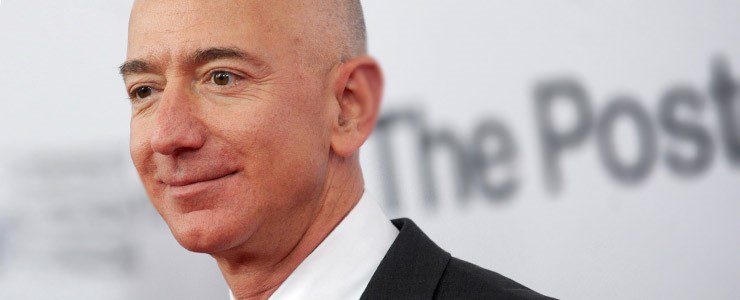
The Netflix Story: How they got 150 million subscribers
Attracting more than 150 million subscribers and boasting an annual revenue of $15.79 billion, the streaming service Netflix has revolutionised television and film. Co-founders Marc Randolph and Reed Hastings were credited with the most historic change in the way we watch television, after they launched their unique service in 1997.
The main business of Netflix is its subscription-based service, offering online streaming of a library of TV programmes and films, including many that are produced in-house. The company has taken a more active role as the producer and distributor of movies and TV series since 2012, providing a variety of “Netflix Original” content in its library.
Early careers
Back in 1997, Randolph, 39, worked as marketing director at 37-year-old Hastings’ company, Pure Atria, which manufactured debugging tools. Randolph started his career in direct mail and marketing at Cherry Lane Music Company in New York.
He became fascinated by using computer software to track customers’ buying behaviour while devising new ways of selling sheet music. His job experience helped him to make informed decisions when he later created the user interface for Netflix, as it doubled as a platform for market research.
Hastings had an interesting youth, first joining the Marine Corps, followed by the Peace Corps, before going to Swaziland to teach high school maths between 1983 and 1985. He returned to the US to attend Stanford University, graduating in 1988 with a master’s degree in computer science.
After a stint working at Adaptive Technology, where he invented a software debugging tool, he launched his own company, Pure Atria, in 1991. In late 1996, Pure Atria began expanding rapidly and Hastings appointed Randolph as vice president of corporate marketing.
Birth of Netflix
They came up with the idea for Netflix when they shared a car to commute to work from their homes in Santa Cruz to Pure Atria’s HQ in Sunnyvale. Over a period of time, they discussed the rental of movies on video from Blockbuster.
In those days, customers would register at the rental store, going down in person to rent a video over the counter. They would also have to return it in person, or through a drop-off box, incurring late fees if they missed the deadline. Sometimes, customers had such a large late fee that they couldn’t afford to pay it, so could no longer rent videos.
Randolph said his three-year-old daughter hadn’t been able to sleep the night before, so he had rented a used copy of Aladdin for her. Hastings recalled how he had received a $40 late fee from Blockbuster after renting out Apollo 13. They began to form an idea of making it easier for people to rent movies.
Having rejected the idea of videos because the postage was too expensive to make it workable, they came up with the concept of Netflix as the world’s first online DVD rental store.
Company launch
On 14th April 1998, Netflix was launched, thanks to various investors, including $25,000 from Randolph’s mother. At first, there were only 30 employees and 925 films available. In those days, DVDs were a fairly new concept and that was just about the whole catalogue available. They used a pay-per-rent model, with prices and due dates similar to Blockbuster.
In the early days, Netflix was viewed as an obscure start-up in Silicon Valley – it wasn’t massively successful. Randolph’s ambitions weren’t particularly high: his first business plan aimed to make Netflix one of the top ten film rental chains within three years. In an interview in September 2019, he called his original goal “lame”.
However, business was hardly booming at first and Netflix was making most of its money through the sale of DVDs, rather than rentals. Amazon founder Jeff Bezos tried to acquire Netflix to get into the DVD market, but Randolph and Hastings resisted his bid, hoping they could salvage their company.
They expanded the brand’s subscriber base by offering free trials, which made the rental service popular, but they were also losing money. Finally, the founders arranged talks with Blockbuster to ask if the high street company would buy Netflix for $50 million.
Randolph recalled meeting Blockbuster’s CEO John Antioco in Dallas to discuss the proposals. However, he claimed Antioco didn’t seem to take Netflix seriously and was “struggling” not to burst out laughing. Randolph said the meeting went downhill after that and it became one of the lowest points of his career.
Revolutionary idea
The business partners decided they weren’t prepared to roll over and die, so they decided they must defeat Blockbuster instead. After rethinking their strategy, they had to initiate “painful layoffs” of one-third of their employees to save money. They also worked out how they could speed up postage for overnight delivery of DVDs and prepared to move into movie streaming.
They knew Hollywood executives were “scared” of losing control in light of what had happened to the music industry – which had suffered due to Napster. If a movie was grossing $8 billion at the box office, they wouldn’t want that to be compromised.
After introducing monthly subscriptions in late 1999, there were around 300,000 subscribers by 2000 and the business began steadily growing. It took Netflix until 2005 to acquire the necessary movie rights, but by this time, the business had turned the corner and was on the road to success. The streaming service was completed by 2007 – during the same year, Netflix rented out its billionth DVD.
As Netflix rose to success, Blockbuster began to fade. Between 2013 and 2014, the 300 corporate stores in the US closed down, although 51 franchises remained open. Today, there is only one privately-owned Blockbuster store left open in Bend, Oregon.
In comparison, Netflix has more than 7,000 employees and its programmes can be streamed via a selection of media devices including smartphones, tablets, digital media players, smart TVs, computers and video game consoles, including PlayStation, Xbox and Wii.
Future plans
In 2018, Netflix reportedly spent $12 billion building its library of original series and films – up 88% on 2017. Original content is viewed as the key to increasing the number of subscribers. Its top two streamed original series are Stranger Things and Black Mirror: a survey showed 13% of lapsed Netflix account holders signed up again to watch season three of Stranger Things.
As the global streaming leader, the brand’s global domination looks set to continue, as Netflix currently has members in more than 190 countries. Subscribers are loyal and although some let their subscriptions lapse from time to time, the majority say they would never get rid of it altogether.
Do you have a vision?
If you’re looking to grow your brand, Headspace Group’s co-working environments available for hire could be the solution. Give us a call on 0800 953 0585 for further details of our flexible office spaces to rent.
© JHVEPhoto / Shutterstock.com



